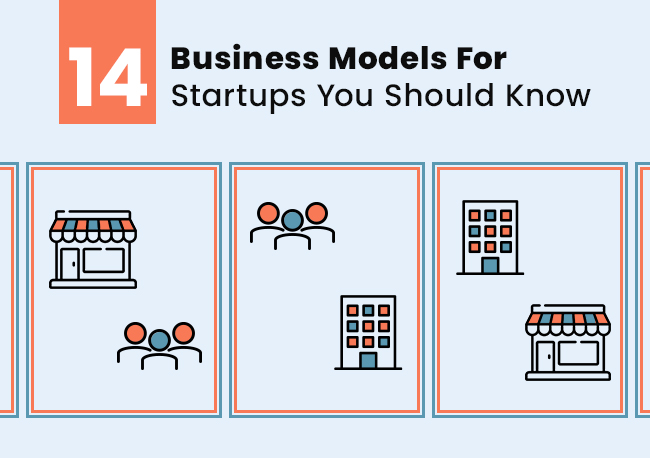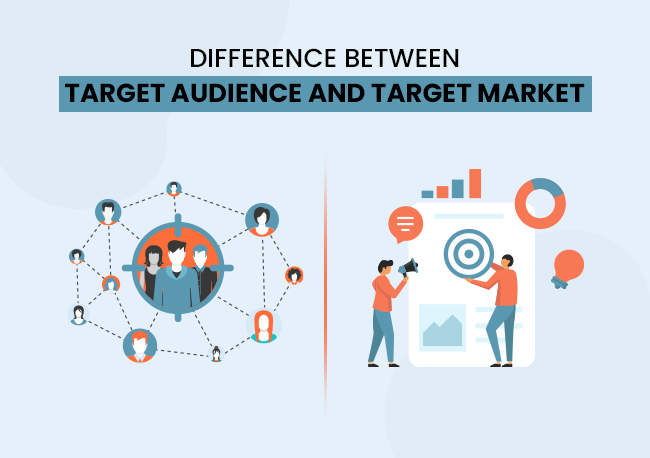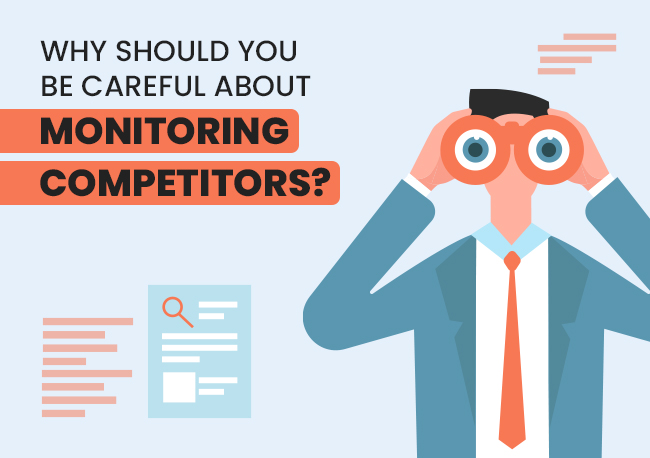| Getting your Trinity Audio player ready... |
As an entrepreneur, you might have numerous bright ideas you wish to make a reality. However, it is pivotal to understand all your ideas could fall short if they are not put into action successfully.
Kickstarting a startup comes with great responsibilities. You have to carry out market research, plan finances, orchestrate branding & marketing initiatives, and, most importantly, choose the right business model.
A well-defined and thought-out business model gives clarity into your value proposition, helps you allocate resources, identify your market, craft an effective strategy, and so much more.
All in all, a business model serves as a roadmap to success, and if you are struggling to pick a suitable model for your startup, stay tuned with this comprehensive guide as we discuss 14 types of business models and which one aligns best with your products or services and goals.
What is A Business Model?
The concept of the business model sheds light on how a startup or organization will create, deliver, and capture value. Basically, it defines the operations of a business, how it generates capital, and stays relevant in the market.
Also Read: Brand Strategy Vs Marketing Strategy – Know The Difference
Importance of Choosing the Right Business Model for Startups
You also need to understand types of business structures when developing a business model. There are four types of business structures: LLCs, sole proprietorships, partnerships, corporations, and S corporations. This Northwest Registered agent also guides you on how to protect your assets, take advantage of tax deductions, and work less.
1. Align with a Value Proposition
Every business has a unique USP to offer, and a great way to highlight it is by choosing a suitable model. A well-defined model ensures your offerings and deliverables remain consistent. This clarity also gives an idea of what your customers can expect from you.
For instance, when your customer receives the expected value, it leads to customer satisfaction, credibility, retention, repeat business, and acquisition.
2. Revenue Generation
Picking an aligned business model helps startups predict the overall value they will generate throughout a period. Let’s assume your startup is about providing insights on the latest happenings worldwide. A fantastic way to make substantial bucks through this startup idea is by choosing a subscription model.
You can allow your readers to explore the article til a certain point, and if they want to continue, they have to pay a specified amount to get the subscription and complete the article.
You can also go for the freemium model, where viewers can read 5 articles for free, and if they want to follow the rest, they will have to apply for a subscription.
Choosing either of the models will define the estimated revenue from the subscribers. However, you must also consider your target audience and product before choosing the right model.
3. Competitive Advantage
Another perk of selecting the fitted model is obtaining a competitive advantage. From establishing an affordable price range to exhibiting value-added services, an appropriate model can help you outshine others in the market.
Let’s say you and your competitor offer a similar tool where potential writers, marketers, students, etc., can scan their work in the tool to detect plagiarism before submitting.
This is when your business model serves as a secret weapon that destroys your competition and helps you win the race. Let’s continue with the example to explain to you how. Since both of you have the same services and features, maybe you can offer a subscription model where the visitor has to pay a monthly fee for unlimited usage.
This will not only help others to choose you but also build an army of loyal individuals who get all the perks and exclusive discounts upon subscribing to your services.
4. Resource Allocation
Until now, we have learned how opting for an appropriate business model can boost profits. But did you know it can save plenty of your bucks, time, and effort? Your business model can determine how many resources you will need for each business activity and how much funds, time, and effort you must invest to complete an activity.
A comprehensive understanding of all these factors will optimize your chances of success.
5. Adaptability to Market
Market changes are inevitable, and they are equally crucial to make advancements and offer a better experience to customers. With this ever-evolving market, you must choose a model that can seamlessly adapt to the consistent shifts in customer preferences, ongoing demands, and economic conditions without revamping your business.
Now, you might be thinking about which business models are flexible enough to suffice with the changing needs. A few models, including Subscription, Freemium, Marketplace, eCommerce, Pay-per-click, etc., can be leveraged to fit your dynamic market.
6. Attracts Investors
Almost every startup needs support to sow the seeds of their business and pave a seamless journey. However, acquiring backup support requires you to gain the confidence of investors & stakeholders, and one way to do that is by selecting a well-defined and compelling model that can attract funding and partnerships.
A definite model shows you have conducted thorough research and considered how your startup will make profits and generate significant returns.
Previously, we gave a clear picture of the business model and the importance of choosing the right one. Next, we will focus on the difference between the business model and the plan.
Also Read: Types Of eCommerce Websites And Models
Difference Between Business Model & Business Plan
| No | Business Model | Business Plan |
| 1 | It is an idea that focuses on how a company will create, deliver & capture value. | It is a detailed plan about a company’s strategies, investments, resources, etc., required to achieve a desired goal. |
| 2 | Its focal point is the target audience, USP, revenue streams, major activities, resources, partnerships, & cost structure. | It mainly outlines details like marketing, sales, operations, financial plans & practical timelines to accomplish a target. |
| 3 | The aim is to give clarity on the functioning and sustainability of the business. | The goal is to communicate vision, mission, operations & decision-making. |
| 4 | Business models are flexible to the demands of the market & users. | Business plans are pre-determined detailed documents that cannot be changed. |
| 5 | They are often illustrated with visual representation. | They are structured with executive summary, market analysis, company description & other essential information. |
Now that you know about the difference. We shall jump straight to discussing the business models.
Types of Business Models for Startup Business
1. Freemium Model
The term freemium model means a business model offering limited services for free. To access the additional features and benefits of the product or service, users have to subscribe to a premium version. They are supposed to pay a certain fee to enjoy the perks of a service or product.
This model is primarily used in software applications and internet-based businesses as they target a broader range of audience. Classic examples of this model are Spotify, Canva, Zoom, and Slack.
2. Subscription Business Model
The subscription business model was coined with the idea of offering access to the customers of a product or service for the long term on a monthly or yearly pre-determined fee.
This model works with the main focus on generating large upfront recurring revenue. Many companies, including Netflix, Microsoft, Uber, and Zoomcar, use this model because of its predictable income stream, customer retention, scalability, and flexibility.
The subscription model is a fantastic choice for Media & Entertainment, Health & Wealth, Educational & Skill Development, Software & Technology, and many other industries.
3. Marketplace Model
The marketplace model refers to a centralized platform where business owners can list their products and sell directly to their customers without third-party involvement. Generally, this model is utilized by eCommerce businesses as they can yield substantial returns with less risk, offer relevant products, enhance customer experience, and effortlessly manage their inventory.
Renowned brands like Amazon, Myntra, Shopcules, and Etsy are quintessential examples of this model.
The marketplace model works by quoting a price to the business owners for selling products through their platform. There is no fixed fee for registration. Every platform has the right to charge a different price. Typically, the fee can be charged as a percentage on every sale or a fixed amount that includes services and infrastructure offered by the platform.
Also Read: 15 Best Websites For Entrepreneurs In 2023
4. On-demand Model
The name says it all. On-demand models are typically designed to deliver what customers want right away or in a short timeframe to offer the best customer experience.
This model can be accessed through digital platforms, and the most common example of the on-demand model is ride-sharing services like Uber and Lyft. Other examples include Zomato, Swiggy, Urban Company, Practo, and Capsule.
The on-demand model also works by business owners registering on digital platforms and providing immediate access to customers for their needs.
5. Virtual Good Model
The term Virtual Good Model refers to trading nonphysical goods in a virtual economy. Imagine you are playing a game and want to buy outfits, food, etc for your avatar. How will you do it? Every game offers coins, diamonds, money, or similar other assets that can be used to purchase the desired items.
Unlike real life, where money is tangible, online games offer a digital economy that cannot be touched and has value only in the game.
Popular examples of this model are Fortnite, Second Life, and League of Legends.
6. Pay-as-you-go Business Model
Pay-as-you-go, aka PAYG, simply refers to users paying a certain amount for the product or service upon every consumption. This model is widely famous among SaaS-based companies because of its flexibility in using the product or services only when required, affordability of usage-based pricing, obtaining predicted costs, and global reach without procurement complexities.
Amazon Web Services (AWS), Microsoft Azure, and Dropbox are some prevalent companies leveraging this model.
7. Fee-for-service Business Model
A fee-for-service model is a typical pricing strategy where companies collect a specific amount from the users to take benefit of the service or product. This model is similar to the PAYG model. However, the difference is that this model offers personalized services according to the user’s needs.
Fee-for-service model is generally used by legal, accounting, consulting, architecture, and other professional service providers where customers get a solution for their problem from the experts.
McKinsey & Company, Upwork, Expedia, Lyft, and 24 Hour Fitness are well-known companies operating on this model.
Also Read: Blog VS Website: The Difference You Need To Know As A Beginner
8. Hook & Bait Model
The term hook and bait or Razor and Blade model refers to attracting customers by selling main products or services at affordable rates and offering complementary products or services at relatively higher prices for a bigger margin. For instance, Gillette is selling its razors at a relatively low cost since it has long-term usage, whereas the blades are sold at an exorbitant price as it is bought frequently.
Sony Playstation and games, Nespresso and Coffee Capsules, HP Printers and Ink, Amazon Kindle, and Ebooks are some companies using this strategy.
9. Reseller Model
The Reseller model is a marvelous choice for entrepreneurs who don’t have an innovative idea but want to kickstart their entrepreneurial journey. Basically, reseller refers to a company or an individual buying products from third parties at low rates and selling them to their customers at bigger margins.
The best part about the reseller model is that you don’t have to carry an inventory or make an investment. You have to purchase goods from a third party according to the customer’s demand and sell them directly.
From pet supplies to retail stores, the reseller model works for almost every business. Best Buy, Dell, AT&T, and Walmart are examples of the reseller model.
10. D2C Business Model
The D2C, also known as Direct to Customer business model, means a business offering products or services directly to its customers. From manufacturing to promotion and everything in between, business owners using this model have to take care of the whole shebang, giving them better control over their operations and customers.
Warby Parker, Mamaearth, Sugar Cosmetics, Pee Safe, and MyGlamm are the brands using the D2C model.
11. Franchise Business Model
The Franchise business model refers to an individual or company acquiring a renowned franchise and managing it with their resources and strategies. This model is a contractual relationship between the franchisor and the franchisee where the franchisor permits the franchisee to operate the business and earn a predetermined income for the management.
McDonalds, Subway, Starbucks, 7-Eleven, Anytime Fitness, and Jiffy Lube are the businesses following this model.
Also Read: How To Start Your Travel Business Website?
12. Dropshipping Business Model
The Dropshipping model refers to a business or individual selling products online and delivering them to the customer’s doorstep. In this model, you don’t have to acquire a physical outlet or inventory to stock the products and process the orders. All you need to do is buy the products from a third party and ship them to the customer’s address.
AliExpress, Oberlo, and Spocket are examples of dropshipping platforms.
13. Affiliate Business Model
An Affiliate business model is where a company spends on an external entity to generate leads or traffic for their business, products, or services. This is also referred to as an advertising model that helps you pave the way toward achieving a desired goal.
Numerous companies offer this model where individuals partner with them to promote their business, products, or services in return, the companies providing the services get a commission on acquiring sales, leads, and other desired aims.
Examples of affiliate business models include Amazon Associates and Rakuten Advertising.
14. Ad-based Business Model
The ad-based business model is an advertising model where companies or individuals generate revenue by allotting a certain amount of space and charging for the same to people, organizations, and startups who want to promote their products or services on that platform.
This model can run on different platforms such as blogs, social media, websites, or apps, where advertisers bid for ad placement, and the highest bidder gets the specific space. Ads can be displayed in the form of banners, videos, sponsored content, popups, and similar formats, and the charges vary depending on the ad type and placement.
Examples of ad-based business models are Facebook, Twitter, Snapchat, Spotify, etc. Also, Mobile apps and online news media also work under this model.
Since you are familiar with the models, let’s walk you through the steps to choose a business model.
Also Read: How Is Ranking Different When Comparing PPC Vs SEO?
Factors to Consider for Choosing A Business Model for A Startup Business
1. Study Your Market
Research is the key factor before choosing a suitable business model. You need to study the market’s current scenario, understand what your audience wants, identify their painpoints, and check out your competitors, their strategies, and the model they are using. Analyzing all these aspects is the first step to understanding what’s actually working in your industry.
2. Know Your Offerings
Many startups make the mistake of opting for a model solely on their advantages. However, it’s significant for you to consider your offerings, budget, scalability, and sustainability. Carefully considering all the above factors will help you choose the model and understand its performance in the market.
3. Identify Monetization Strategies
Next, you need to identify your monetization strategies. The market is surrounded by a variety of strategies, such as generating revenue by selling products, subscription services, advertising, charging for accessing premium services of a product, offering pay-per-usage services, affiliate marketing, and so much more.
However, you cannot choose them all or randomly go for anyone. You have to consider your target audience, competitive landscape, product type, and business goal before making a decision.
Evaluate every aspect and choose a strategy. Always remember to constantly review the effectiveness of the selected strategy. Collect user feedback and iterate the necessary changes to refine your strategy.
4. Take Scalability into Account
Replacing a model because of rising demand in the future is not a feasible alternative. You have to pick a model that can seamlessly accommodate the growth. Examine whether or not your operations, resources, and processes will scale smoothly as you grow your network. This will ensure your business stands tall tomorrow without any limitations.
Do remember that there is no one-size that fits all. There are models that might work wonders for some businesses; on the other hand, those models might be futile for you. It’s crucial for you to make a choice that works for you, your target market, and your goals. If you still feel confused, you can always seek expert advice.
Also Read: Difference Between Target Audience And Target Market
Frequently Asked Questions
There is no specific model that is better than the other. As previously mentioned, some models are effective for certain businesses but not necessarily for others. You need to choose a model that goes side by side with your goals, business, and user’s needs.
Start by evaluating your product or service and how the model can add value to it. Besides this, you also need to examine your market, the requirements of your target audience, evaluate scalability, and the risks involved. Once the model fits with these factors and has the potential for profitable growth, the model is likely to be successful for you.
Opting for a scalable model gives you the benefit of handling your business efficiently, dodging potential hurdles, and maintaining consistent profitability. The best part is you can leverage its ability to scale as your business grows.
Wearing too many hats is never a recommended solution. Instead, you should focus on choosing the optimal model that yields productive outcomes for your business.
Conclusion
So far, we gave you an overview of the business models, their types, the differences, and aspects to assess before making up your mind. We hope all the information we shared in the blog helps you settle down on a model.
Initially, the process might seem overwhelming, but at the end of the day, it’s all about weighing the variables to ease up the decision-making process.




